Pippin Anderson
We know biodiversity in cities is a good thing. For example we have research that shows a diversity of plants provides a similar variety of livelihood options to the urban poor, some sequester carbon with a close-to-source efficiency, and others retain soil. Multiple options allow for more choice for gardens for functional and aesthetic ends. Biodiversity provides a diversity of services. We also know that people in cities govern the globe and are responsible for a sustainable future, one hinged on the preservation of global biodiversity, so it is critical that people in cities value biodiversity. Here is what we don’t know so well. We don’t know the exact workings of many of the functions or services provided by biodiversity in cities. We know some, but in truth we are just scratching the surface. We also don’t know how to really give biodiversity traction with the people who live in cities, especially in the face of significant development pressures. So, these are the two areas where I would spend my limited budget: on research towards really understanding the workings of biodiversity in cities, and then in exposing more urban citizens, in particular the young, to urban biodiversity. If the budget was really limited I would go for the second as my single action. We are sentimental creatures and hold dear what we were exposed to as children. If all we achieve on our limited budget is a growing urban population coveting biodiversity the money for the rest will follow.
Peter Werner
My message is to bring citizens more in touch with urban nature and urban biodiversity using components and methods — including values, incentives, demonstrations, etc. — that match urban lifestyle. And, urban nature provides a lot of opportunities for such components. If you present nature in cities in a way that people only links it with a rural lifestyle, with sanctity, with closed borders, and so on, then you have no chance in urban areas because urban life is the opposite of that. Here is a list of words with which the citizens of a city can be connected with urban nature and urban biodiversity: perception, awareness, appreciation, literacy, curiosity, enjoyment, excitement, surprise, astonishment, emotion, spontaneity, freedom, encouragement, integration, inclusion, involvement, participation…Wording is critical in the dissemination of messages. Notice the words I am not using in this context After the wording, activities have to follow, and here too, activities are needed which represent the sense of urban life. The new media do that best. The challenge is to include urban nature in social networks, video portals, and games (serious games) and to produce urban events and performances about urban nature, not at the edge but in the center of a city, where more people can experience them. If urbanites discover and include urban nature as part of their life, then you save public money, because biodiversity in the urban matrix will be ensured and the governance can concentrate its activities on special nature conservation projects in which rare and endangered species will be protected.
about the writer
Andre Mader
Andre is a conservation biologist specializing in subnational implementation of the Convention on Biological Diversity, seconded to the Secretariat for a third year by ICLEI. FULL BIO
Andre Mader
Cities are new competitors for the finite pots of global biodiversity funding. Funding is still undoubtedly lacking elsewhere, but biodiversity in cities deserves special attention due to its extraordinary “investment” potential to influence every aspect of biodiversity conservation at every scale by affecting, en masse, people’s (voters’) attitudes. I therefore believe that the biggest bang for biodiversity buck is through the opportunity, in cities, to reach multitudes of people with a subtle but concentrated conservation message. Nothing can do this in a more reliable way than the good old zoo (and/or, in many cases, the aquarium or botanical garden). These institutions can be accessed by unprecedented numbers of people, who have flocked to them for centuries knowing that they can expect an entertainment-intensive experience. There are also “bad old zoos”, and it is critical that entertainment is subtly embellished with messages so that the experience is also an education-intensive one. Of course zoos offer the additional function of ex-situ conservation and possible reintroduction. Not insignificantly, due to their proven popularity, they are also among the few conservation options that can be net money makers and it is therefore not hard to get the private sector involved. Zoos are therefore worth the considerable cost of their establishment and even more worthwhile investing in when all that’s required is to enhance existing ones with improved interpretative facilities and improved accessibility by all sectors of the citizenry. Local governments, which commonly own or manage these institutions, would do well to consider these options, and many already do to great effect.

about the writer
Bram Gunther
Bram Gunther, former Chief of Forestry, Horticulture, and Natural Resources for NYC Parks, is Co-founder of the Natural Areas Conservancy and sits on their board. A Fellow at The Nature of Cities, and a business partner at Plan it Wild, he just finished a novel about life in the age of climate change in NYC 2050.
Bram Gunther
In New York City, the single most important biodiversity program recently has been the creation of the Natural Areas Conservancy (NAC), a non-profit that works in partnership with the New York City Parks Department (Parks). Parks’ Natural Resource Group is the oldest urban conservation unit in the nation, started in 1984. The management of natural areas has become critical as the City faces climate change and seeks to increase public health. The City, however, will always have limits on conservation funding. In its organization and business model, the NAC capitalizes on present-day concepts of collaborative governance and the flexibility and effectiveness of public-private partnerships to enhance and expand current conservation work. The fundamental principle of the NAC is to increase the quality of the information flow between land management and design, researchers, and decision-makers. To this effect, the NAC is funding the first ever citywide ecological and social site assessments of Parks’ natural areas, data that will be used to guide and prioritize our conservation endeavors. NAC is expanding programmatic work by funding a hydrological engineer, additional foresters, and the expansion of our Native Plant Center to grow marshland and beach plants which will be used to make our coastlines more resilient. The NAC represents a significant change in urban natural resource management, from a focus on isolated plots to a single unified ecosystem and administrative whole. The NAC is emblematic of how urban ecological management will be done in the future: public/private partnerships.

about the writer
Ana Faggi
Ana Faggi graduated in agricultural engineering, and has a Ph.D. in Forest Science, she is currently Dean of the Engineer Faculty (Flores University, Argentina). Her main research interests are in Urban Ecology and Ecological Restoration.
Ana Faggi
Recently Buenos Aires has begun a significant transformation in order to revert the lack of green spaces and the reduction of its natural capital. The City Council worked a territorial model towards 2060 for a healthy and livable urban fabric with strategies to strengthen and recover the relation between Nature and the City. These includes the creation of new parks, squares and green corridors and the improvement of existing green areas including the rehabilitation of a 370 hectares big urban reserve located down town. In scarcity times of remnant areas with potential to become parks, as well as money that can be applied to the creation of new spaces, the local administration should make possible that vacant private lots could be at least temporarily used as new green community spaces. These could be designed, built and managed by NGOs, schools, universities, groups of pensioners, etc., devoted to urban agriculture or environmental education until the owner decides the lot construction. When this happens the builder should mitigate at the place the loss of nature with green terraces or walls. Buenos Aires’ strategy is to connect new and existing public green space through a structure of green corridors is adequate, because it regenerates permeable urban surface and increase biodiversity. Nevertheless, the attention should be placed not only on trees, but on shrubs, herbs and vines to preserve the Pampas ecoregion characterized by herbaceous components. This could apply to covered part of the sidewalks in order to increase groundcover today nonexistent in the city.

about the writer
David Maddox
David loves urban spaces and nature. He loves creativity and collaboration. He loves theatre and music. In his life and work he has practiced in all of these as, in various moments, a scientist, a climate change researcher, a land steward, an ecological practitioner, composer, a playwright, a musician, an actor, and a theatre director.
David Maddox
I was in a meeting a few months ago and someone put up a picture of a bioswale and said: “What’s this? It’s not a park. It doesn’t function like one!” Well, the bioswale is functioning exactly as designed: to collect stormwater. It does other things too, such as be a pretty patch of green and support biodiversity. But my colleague, who is a design professional, wasn’t aware of this. Many of us agree that nature in cities is good for cities and people. Biodiversity and nature provide formal ecosystem services and less tangible biophilic services. The professionals — mostly — know this. We have made the case less well with urban dwellers more broadly, who are rightly concerned about jobs, safety, transportation, livability, walkability and so on, maybe in that order. Many, even most, think of nature as irrelevant to their everyday lives. Others think of nature as “somewhere else”. To me, the single most important need isn’t in science, but in communication. We need to better make the connection between people and urban nature. Such awareness would trickle sideways to other residents, upwards to policy-makers, and akimbo to design professionals. How do we do it? We need to collaborate more with artists, exhibit designers, and media minds to make real use of demonstration projects, art installations, and pop-up messaging. How about a pop-up demonstration ecosystem in a city square? Paris’ City Hall did one recently. Washington, D.C. storm drains have painted signs that tell you that the site is part of the Chesapeake Bay drainage. How about a sculpture of a fish swimming through a building, as in Portland? How about an explanatory sign on the bioswale? Most fundamentally we need not to just “educate”, but engage, to find ways to reach beyond the groups we usually talk to and expand the dialog to include people who might not see things the same way. To do this we’ll have to find new ways to communicate, and find new collaborators outside our disciplines, and maybe outside our comfort zones.
about the writer
John Kostyack
John Kostyack is VP for Wildlife Conservation at the National Wildlife Federation. His focus is restoring ecosystems to help reduce harmful climate change impacts. FULL BIO
John Kostyack
Resiliency is the Hallmark of Local Leadership, Wildlife conservationists should celebrate leaders, such as those in Curitiba, Brazil, who have achieved conservation results under the banner of sustainability. Champions of sustainability measure their success by the triple bottom line of environmental, economic and social progress- an approach to conservation more likely to produce fair and politically-viable outcomes that one focused solely on biodiversity. That said, sustainability no longer quite captures what is most needed in today’s urban environments. Today, the most important idea for advancing conservation in the city is resilience. Resilience – making people, communities and systems better prepared to withstand catastrophic events- incorporates all of the concepts of sustainability while highlighting the need to confront the looming threat of climate change. In the past decade, we have seen disasters such as Superstorm Sandy and Hurricane Katrina send shock waves through U.S. cities. Yet many refuse to acknowledge that these extreme weather events are part of the “new normal” of rapid climate change. This denial of climate change reality puts both people and wildlife at great risk. Adopting resiliency as the new hallmark of local leadership would help reverse this dynamic. Leaders would be expected to know the most effective strategies for coping with intensified heat, drought, floods and storms. They would need to know how to rebuild oyster reefs, wetlands and other natural features to protect communities from harmful climate change impacts while supporting healthy fish and wildlife populations. Greater attention to resiliency and climate-related risks would also lead urbanites to become stronger advocates for forward-thinking climate policy. On their agenda would be two ideas essential to the future of their cities: a tax or similar market-based limit on the carbon pollution driving climate change and, under the principle of “polluter pays for its damage,” a requirement that at least some of these tax revenues be used to help cities cope with inevitable climate-related disasters.

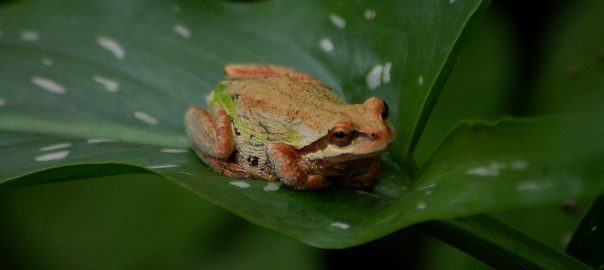






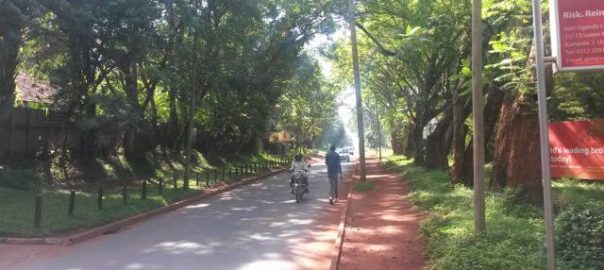
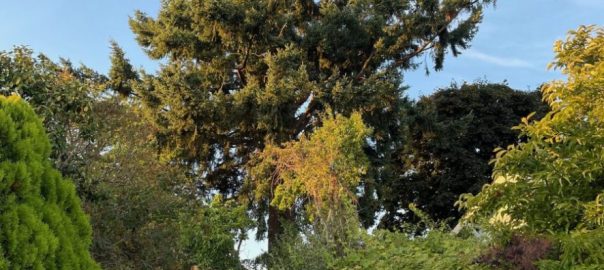
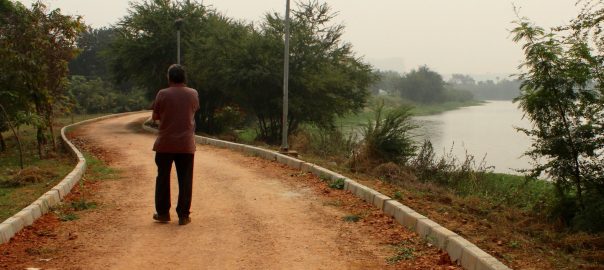
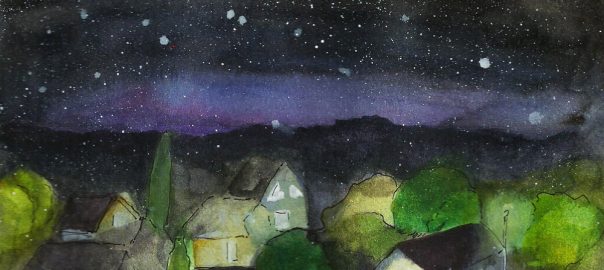
Dear all,
First of all, we want to share our congratulations to Dr. David Maddox, editor and curator of this blog, and also to all the authors running and contributing to this facility for promoting exchange and debate on urban nature and its importance for people.
Regarding this current conversation, we agree with all of you on the need to improve the connection between people and biodiversity/urban nature. In this sense, here we briefly reflect on four basic ideas for raising awareness on biodiversity in cities:
1. We should encourage the discovery of biodiversity at all levels. We needed to disseminate knowledge, to spread a “general culture” about biodiversity with the population. Here there is a need to circulate knowledge on biodiversity and its importance: functionality, richness, beauty, utility, economic value, and so on. This has no restrictions, no risks, and can (and should) be done by many institutions as long as there is energy, motivation and resources.
2. There is a need to enhance knowledge on our own (local) biodiversity: bring the “concept” to urban citizens. It is important to spread that biodiversity is not just a concept applied to National Parks or wild forests. It is also present right next to our apartments, even in our balconies, or more clearly at our urban parks. In Barcelona this has been one of the priorities of our Barcelona Green Infrastructure and Biodiversity Plan.
3. Benefits of biodiversity and ecosystem services need to be identified and explained at urban level. In this sense, the Barcelona Plan places great emphasis on these benefits and aims at sharing them through different illustrations, pictures and explanations. ( See also here the post on Barcelona’s Plan by André Mader )
4. One of the most effective ways in which we all learn is to get actively involved. There are plenty of examples and appropriate programmes that invite citizens to participate in the improvement of knowledge on biodiversity and its conservation. Here there are some examples and resources:
> BioBlitz initiatives: intense periods of biological surveying in an attempt to record all the living species within a designated area. Example of the Bioblitz initiative in Barcelona is available here: http://www.blogmuseuciencies.org/category/bioblitz/
> Nature Calendars: Woodland Trust Centre for Ecology and Hydrology. More info at: http://www.naturescalendar.org.uk/wildlife/
> The USA National Phenology Network. This network brings together citizen scientists, government agencies, non-profit groups, educators and students of all ages to monitor the impacts of climate change on plants and animals in the United States. More info at: https://www.usanpn.org/
> Use of smartphones in the observation of fauna and flora, for the general public. See an article on the use of Mobile applications dedicated to biodiversity at:
http://www.proximamobile.eu/article/mobile-applications-dedicated-biodiversity
As a final remark we want to emphasize that citizens, politicians and any decision maker will only wish to allocate budgets to nature conservation if we manage to “give value” and show the multiple services of biodiversity and nature. Therefore all the measures proposed are, in fact, investments for further action.
Teresa Franquesa & Toni Pujol
Superstorm Sandy changed everything here in New York City. Biodiversity is no longer viewed as estoteric. Nature-based infrastructure has got real traction. There is State and Federal money now for restoration like never before. In fact, the State and Feds have given money for a 150-acre restoration of parkland that sits on Jamaica Bay. This is a huge investment in nature and its capacity to make our lives better. That sentence is actually weird: without nature of course there is no us. But things are shifting: from the harvest of nature to the protection of nature. That is an optimistic view on my part, but I believe in it.
This discussion caught my interest – I recently published a Guest Editorial in the Seattle Times on the subject of preserving the Urban Wild. In my opinion, cities need to formally protect Urban Wild areas as a first measure. In Seattle, many of these spaces reside in the Parks system, which is a problem because increasing pressures from budget-cuts and recreation interests are constantly whittling away the Urban Wild, even as enormous restoration efforts (Green Seattle Partnership) are working to restore them. Many people assume that remnant Urban Wild spaces are already protected, but they are not. I have proposed a municipal version of the Wilderness Preservation Act, a formal recognition of the value of the Urban Wild to people as well as wildlife. To define and identify what would qualify as Urban Wild would be the first task.
I ran across a 2007 survey on European attitudes toward biodiversity. http://ec.europa.eu/public_opinion/flash/fl_219_en.pdf
Among many interesting findings: 35% had never heard of the word “biodiversity”; 30% had heard the word but didn’t know what it meant; 35% had heard of it AND knew what it meant. Although most felt biodiversity protection was a moral issue, but was mostly an issue of somewhere else — only 19% felt personally affected by it. And this is in Europe where (I just guessing) attitudes are progressive on this issue.
I’d say these numbers are problematic, but what should we do? In this discussion there has been a mix of calls for more engagement with people and more data.
I would add to this that we need more data how how people engage with nature, especially locally:
— If they feel engaged with nature (or do they?) but are not familiar with the word “biodiversity”, what words DO they use? If we knew we might be able to communicate ideas about this topic more effectively and widely. Such “word mapping” would be key to any communications campaign. Who knows? We might find out that we should never use the word “biodiversity” in public discourse!
— I wish we had more of these kind of data in more global regions. People in Africa, South America, Asia, Europe, etc., might have similar fundamental desires about the “nature of” their communities, but express these desires very differently. Or not. Right now we don’t know.
— Putting a $$ value on biodiversity is always going to be difficult. The value of how a tree pit improves storm water management is easier to do. But what’s the “value” of seeing a bald eagle fly over your apartment building? That’s harder to know, at least in dollar terms. Maybe polling using relative values (this versus that) may be productive, but “biodiversity” versus “safe streets” (to use an extreme comparison) will always be apples versus oranges. We need to find a better and more broadly understandable way to fit biodiversity, and urban nature more generally, into the dialog of how to build better cities.
I would like to address two points with respect to the comments of this round table. But first, I want to answer Bram. There are some publications about the economical benefits of biodiversity. The TEEB (The Economics of Ecosystems and Biodiversity) reports are the best entrance to that topic, especially the one about local and regional planning. In Germany, several authors are just writing a national German TEEB report and one volume will be a specific urban report: the natural capital of a city.
Now my two points. The first point is, that we need incentives to motivate citizens to deal with and to engage for urban nature. Education and knowledge are important basics for that, but as Cecilia mentioned, these are no guarantees that urban nature is cherished or valued by citizens or stakeholders. Interest has to be aroused and the cognition that urban nature is an essential part of life quality and human-well being in cities (e. g. the TEEB approach). For both we need tools (some were mentioned in the comments before). The second point is, a city is a very dynamic system, focusing the contemporary life style of our society, and buildings are features of it. So we need approaches and procedures to deal with urban nature in a modern and dynamic way (e. g. connect nature with urban lifestyle or nature for time), and to integrate urban green in the urban matrix and to urban buildings.
I agree that there is always a need to raise awareness and educate the public. I would also like to add that it would help to have a numbers element involved. Is there a way to quantify the benefits of biodiversity, or the costs associated with a lack of biodiversity? Can we perform an environmental economic analysis of biodiversity? How much are we willing to pay for biodiversity, or more specifically, how much are we willing to lose? I find that salient numbers go a long way with the general public, especially as it relates to buying into something where the benefits are not immediately accessible.
David, I agree that artists can be really be meaningful if they come to understand why we need urban biodiversity. In Brazil TV actors and soccer players have a tremendous power to transform people’s minds. Maybe, it could be a good way to start.
Pippin, I also agree with you: I am not sure if zoos are the best way to showcase animals in cities. Maybe, in larger ecosystem fragments, people can have contact with native species of mammals, birds and insects. In our forests and even in surrounding streets, we can see monkeys and animals. People get to excited when they meet them.
Good ecological park and other green areas design also helps people understand and learn about nature, and natural processes. Even small community gardens and yards can be educative and help a lot to reestablish human nature relationship. Food production, also is quite effective.
The real challenge for me is changing decision makers minds in my city. It is all about money and technology – green washing…
Gardens and zoos are indeed logical places to host such “local bodiversity” events and demonstrations. It might take a mission shift for many of these organizations, though, since they are often driven by showcasing nature that is “somewhere else” — an issue that many of us who write here at TNOC worry about. Botanic gardens are probably a little more “local” than zoos in this regard.
But these organizations have the know-how for exhibit design, and engaging them around exhibitions of local and urban nature would be great. I continue to think also that we need exhibits where the people are — nature demos and exhibits in, say, public squares and street corners. Maybe there is a win-win for gardens and Zoos in that such exhibits would constitute outreach beyond the borders of their physical sites.
I also think about living exhibits at schools. Keitari Iro wrote about such as exhibit at a school in Japan: a biotope as a living classroom. http://www.thenatureofcities.com/2013/07/21/growing-place-in-japan-creating-ecological-spaces-at-school-that-educate-and-engage-everyone/
Bram Excellent News! Maybe our Mayor and City Commissioners wake up and listen to so many organizations and people concerned with nature in the City of Rio de Janeiro.
Unfortunatelly, what we have here so far is ecosystems fragments eradication, rivers channelization, wetlands filling, and so on. I have posted an album at my FB where an immense area of sand ecosystem was wipe out to give place to the Olympic Golf course. Examples abound…
We need raise awareness of urban biodiversity in all levels, many residents really care and try to change the destruction path, but even educated people don’t have any idea why they need nature in cities. It is almost always all about the money, jobs, urban growth and so on.
https://www.facebook.com/cecilia.herzog.inverde/media_set?set=a.746882665341047.1073741840.100000579602655&type=3
In an interesting turn of events in New York City, the City Council recently passed a Local Law that mandates an increase in biodiversity. For two years the Parks Department–via me– and the City Council went back and forth on this law. I was worried that it would too heavily proscribe what must be planted and where. There are many plantings throughout the city in which only a native plants palette would narrow planting options and would work to that site’s disadvantage. What we ended up getting is a law that, as I said, mandates increased biodiversity by using native plants. This applies only in our “natural areas”, which for the Parks Department is 10,000 acres of so of forest, wetlands, and grasslands. We run a Native Plant Center here in New York City that produces native plants grown from locally collected seed. Despite anxiety from landscape architects we think the law is positive and gives weight to the value of urban biodiversity. Bram
I like your vision Peter! I agree and I know zoos, aquariums and botanical gardens are not the only places to do this; and that we do need additional expertise. There is a field known as conservation psychology (as opposed to environmental psychology), which is looking precisely at ways of understanding human behavior towards nature, and ways of influencing it… I also know of environmental educators who call this social marketing and find it unprincipled. Nevertheless I guess we need to try various different approaches – developing new ones and honing the tried-and-tested.
Andre is right, that we circulate around the point awareness. I believe, that we have to use the “traditional” ways like education, showcases by zoos, gardens, and so on, and to support interesting park and building projects which demonstrate how urban biodiversity can be increased, but if we want to communicate urban biodiversity, urban plants and animals, especially to reach young people, then we have to think about new ways. I have no real idea how we can communicate urban biodiversity better to young people, perhaps we should discuss with marketing professionals. My vision is, that children and young boys and girls will think that it is “cool” to know 20 or 30 urban species, like brands, and that the arrivals of swifts in spring is an occasion for a happening event.
Whenever I try to convince an audience of the worthiness of cities in the biodiversity debate; or of biodiversity in the cities debate, I focus on the importance of raising awareness. I was therefore encouraged to see that most of the contributions above have the same general sentiment – that communicating an appreciation of nature best addresses the root of our ecological woes. Of course we need to pursue various actions continuously and relentlessly but, if we were to choose one action – or a first action, then it should be that which best, and most immediately, addresses the lack of awareness of the city dweller. From that point (at least in a democratic society) all else can flow; all else is facilitated. Aware people are likely to support further initiatives that favor what they know and care about; politicians will get behind what their voters support; corporations will produce what people want. I focused on (appropriately managed) zoos, aquariums and botanical gardens in my contribution but, really, the point is that what’s proven most effective in achieving awareness is a natural experience that is three things: intensive, educational, and entertaining.
A very interesting website. I like the idea of promoting dialogue.
The big challenge is to connect biodiversity to people’s well-being. In cities we become very disconnected as we do not see the benefits of biodiversity other than the recreational value of open spaces or some contained ‘wild life’. Biodiversity becomes an abstract concept particularly as we alter natural spaces to create pretty parks. I see the surrounding peri-urban areas as the linkages to the intact biodiversity in the rural parts of the city. We need to place the city biodiversity into the broader ecosystem context to understand the sources and sinks. With a more systems approach we can improve our message of how biodiversity can support our livelihoods. Examples include limiting the effects of major disasters such as floods by maintaining our river systems, or fire management as well as pristine open spaces for religious or cultural purposes. We need a very strong campaign on the value of biodiversity in your backyard
This is my first post and I hope I am not off-key :).
Yes, I agree with David. We need to convince ordinary people that we can enjoy biodiversity at home.
Last weekend 48-Open House was held in Buenos Aires, it was a chance to visit private homes looking for interesting architecture projects. There were some inspirig examples of tiny gardens, green walls, etc. This was a wonderful chance to communicate opportunities for a new urbanstyle. Every city should offer such events.
I agree with Russell about stand-alone measures. Yet I can think of relatively few programs that deeply integrate science, education and outreach. What are the examples? It would be great to publicize them, especially to cities that have had a harder time getting biodiversity and nature projects off the ground.
To reframe the original question, though: what aspect of urban biodiversity is lagging? I would say it isn’t the science, it’s the broader understanding in the public about the existence and importance of urban biodiversity and nature. Without such broader appreciation it will be difficult to advance these issues.
I definitely don’t think we have all the people we need on board. I would love to find ways to meet and plan with more artists and exhibit designers. And probably business people too, on whose property many such exhibits could be presented, and whose support would be critical.
I loved the idea of Peter that we must relate biodiversity to urban life thrilling people that dwells there. For that little money is needed and sustainability will be guaranteed in time
What a fantastic facility and interesting discussion! I’d like to add a couple of caveats.
Firstly, there is no one-size-fits-all.
Cities have much in common yet still vary enough to require their own tailor-made approaches to biodiversity conservation. An “important idea, program or action” that yields great success in one city, may fail to find traction in another. The success of interventions will also vary between neighbourhoods, given the social, economic and ecological heterogeneity of urban landscapes.
Secondly, there is no silver bullet.
Successful biodiversity conservation requires a multipronged, multiscaled approach, targeting a multiplicity of stakeholders, species and ecosystems through a combination of multimedia, science, education, policy and action. How useful is research without communication; a protected area without law enforcement; or a zoo unvisited by school children? Can we meaningfully isolate a single intervention as the most important or are they all too interconnected and mutually dependent? To ensure maximum impact, perhaps even the smallest of municipal budgets would be better spent on a package of measures. Standalone measures all-too-readily flop and fizzle.
Lovely to see a diversity of responses and some unified themes emerging. Two comments. Several mentions of the need to engage more with society, and I wonder if we have the right people on board to do this, and how to find those people and go about this more effectively. My second comment is for Andre, who boldly raises the notion of zoos (well done for going there, many would have steered clear!). The notion of animals in cities as part of the nature of cities and the experience of nature in cities is something we tend to steer clear of, or restrict to those more benign species or those few that thrive in cities. I thnk the idea of ‘show casing’ animals, particularly larger and more charismatic species is an interesting one. I am not sure zoos are the answer, but perhaps there is something else out there we havent thought of yet? I have a number of views on zoos and how they are used to present and construct nature in particular ways that I think might be counter to some of the ‘understand and appreciate nature’ agendas, but Andre we can take these up over a beer when you are next in Cape Town!